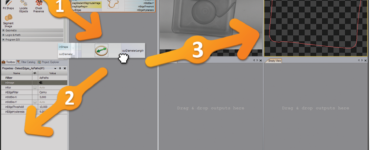Whether you’re an entrepreneur, or you’re simply just interested in how businesses operate, understanding how to read a profit and loss statement is important.
It can seem like a confusing statement, though. The balance on it is a delicate one, enough so that knowing how to read the thing is half the battle. Once you do that, though, the other half is making sure the business is making a profit.
Not sure where to begin? Don’t worry; we’ve got you covered. Here’s a quick guide to beginning to understand a profit or loss statement.
What is a Profit and Loss Statement?
A profit and loss statement is an important financial document. It helps businesses, entrepreneurs, and investors understand and track their earnings and expenses throughout a specific period of time. It is a snapshot of organizations financial performance.
Analyzing Your Revenues & Costs
The profit and loss statement is one of the most important elements when analyzing your revenues and costs. This statement outlines all the income and expenses associated with your business and provides a clear view of your financial success. It is important to understand the various parts that make up the statement in order to effectively assess your company’s financial position.
How to Do a Profit and Loss Statement?
There are different ways to create a profit and loss statement. You may use accounting tools like QuickBooks, or do it manually using Excel. You can also ask for help from financial forecasting consulting companies. profits.
What are The Parts of a Profit and Loss Statement?
It is important to understand all of the parts of a profit and loss statement in order to correctly calculate and assess an organization’s financial health and performance. There are several parts to the statement:
Revenue
Revenue is the income a business earns by selling goods or services. Revenue can come from a variety of sources, such as sales from a storefront, online sales, and subscriptions.
Conversely, a profit or loss statement shows the net profit or loss of a business, based on the revenue it has earned and expenses it has incurred. The revenue figure is the top line of the statement, reflecting the total income (sales & other services) earned by a business during a certain period.
Revenue should be compared to prior accounting periods to identify potential revenue increases or decreases in comparison to goals or forecasts. Monitoring sales revenue can help a business adjust operations and anticipate potential changes related to its performance.
Cost of Goods Sold
Cost of Goods Sold (COGS) is the direct cost associated with items sold during a given period. These costs include the costs of raw materials. The cost of labor, and other direct costs associated with the production of the items sold. COGS is particularly important for businesses that sell physical goods.
It is because it identifies the amount that is needed to recreate the items sold. By understanding the cost of goods sold, businesses can better understand their profitability and adjust pricing strategies accordingly.
Operating Expenses
Operating expenses refer to the costs associated with normal business activities. This includes expenses such as personnel costs, rent, utilities, supplies, insurance, fees, and advertising.
It also involves any other costs related to running the day–to–day business operations. Operating expenses are detailed in the Profit or Loss statement. Emphasizing how efficiently the business is managing these costs.
Understanding operating expenses can help shareholders, investors, lenders, and other stakeholders gauge how accurately the management team is managing the business’s financial resources.
Gross Profit (Or Loss)
Gross Profit or Loss is a measure of a business’s profitability. It is a calculation of the revenue earned after costs of production/items purchased have been deducted. This calculation gives us an idea of how much margin a business is making or losing in any given period.
Gross Profit or Loss statement will help us to understand how much revenue has been made or lost. Especially after deducting the costs of goods and services purchased/produced.
It is an important figure as it gives the business an indication of whether it has made a profit. Or has gone into a loss-making phase. By understanding the gross profit or loss statement, we can gauge the performance of the business in terms of profit-making ability.
Operating Profit
Operating Profit is the second-to-last line on a profit or loss statement and is a measure of a company’s performance. It is calculated by deducting the operating expenses from the revenue.
Operating Profit allows us to measure the operational efficiency of a business: it informs us of how much money the company is making from its operations.
It is also important to note that operating profit does not include non-operating items, such as investments or gains or losses from foreign exchange.
Net Profit
Net Profit is the measure of the overall success and performance of a company’s financial management. Specifically, net profit is calculated by subtracting the total expenses, including the cost of goods sold, from the total revenue of the business.
It is important to understand the components of the P&L statement in order to assess the profitability of a company. Net Profit can be either positive or negative based on income earned versus expenses and is used to give a view of the overall financial performance of a business.
Maximizing Profitability Using a Profit or Loss Statement
In conclusion, understanding the Profit or Loss Statement is important for established companies and those just starting out. It provides an in-depth analysis of your fiscal situation and helps you to properly manage your finances.
Take some time to learn more about how to read a balance sheet and create a strong financial baseline. With this knowledge, you can manage your business to reach your goals!
If you enjoyed this article, check out some of our other great articles. We have tons of content!










